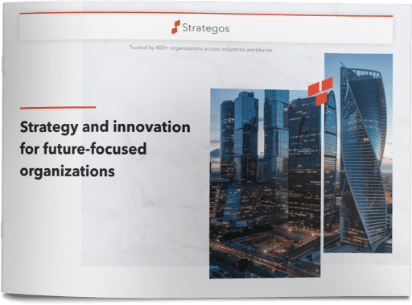R&D and Strategy
The competitive landscape today is as fierce as ever. Companies find it increasingly difficult to meet their growth targets and must look for new solutions that can bring them additional revenue streams. R&D can be a source of competitive advantage. It can help companies to develop innovative products and new technologies that sustain innovative business models. It can also lead to operational improvements and increases in productivity.
We often see that R&D is not aligned with a company’s overall business strategy
Despite its relevance, we often see that R&D is not aligned with a company’s overall business strategy. On one hand, we may find an R&D area “isolated”, with an agenda left to their managers and with no assurance of a direct link to the business or corporate strategy. On the other hand, we may see an “operational” R&D, way too focused on the “day-to-day” activities of the company and constrained by short-term financial goals that refrain it from having an enduring strategic impact on the business.
Technology Management Architecture
Setting a Technology Management Architecture can help a company to link R&D to strategy and maximize its return on its R&D efforts. These were the main goals of a recent assignment with one of the largest Brazilian companies and a world’s leading player in the steel industry. In this blog post, we share some key learning from this project.
All these elements of the architecture could and should be customised according to the organization’s specificities.
A Technology Management Architecture consists of two main practices: i) A Technology Planning practice that builds a technology agenda that responds to the strategic challenges of the organization; ii) An R&D Portfolio Management Practice that maximizes the value generated by the set of investments in R&D, optimizing prioritization, resource allocation and risk management. These practices are sustained by a set of supporting elements, such as: a proper governance structure; processes and tools; a set of indicators and metrics; technology intelligence activities providing insights both for technology planning and the business strategy; and mechanisms to promote an effective collaboration between internal and external stakeholders; just to give some examples. All these elements of the architecture could and should be customised according to the organization’s specificities.
Constructing a Technology Management Architecture
One first step in the construction of a Technology Management Architecture is to define a strategic intent for R&D at the company – establish a clear and common view on the mission of R&D and its
scope of action. “Which markets should be a priority for R&D?”; “Should we dedicate more time to research or to development activities?”; “Are we going to focus on process development or new product development?” These are examples of questions that should be addressed and that express different dimensions of R&D’s scope of action. It is not rare to find contrasting – if not conflicting – answers to these questions among a company’s technical leaders, let alone across other functional areas and different regional business units. This was the case in our client. With the objectives and scope of action defined, the strategic intent is completed by the identification of the means for the execution of that strategy, e.g. particular skills or resources needed. This strategic intent sets a direction for the Technology Management Architecture and establishes guidelines for its design.
Diverse methodologies and tools can be used in the design of a Technology Planning practice. In our view, Technology Roadmapping (TRM) should be considered. This is a tool that translates market trends and drivers into product requirements, and, subsequently, those product requirements into technology needs. It helps to develop a prospective view on technologies and markets and to define an agenda of potential R&D projects.
An R&D Portfolio Management practice should be put in place in order to establish a portfolio of projects balanced according to the company’s strategy priorities. This can be achieved through a stage-gate process with a set of go / no-go decision moments (gates) and a set of phases with well defined criteria for the analysis and selection of projects. One general rule is to keep this process as simple as possible. A small number of balancing dimensions, reflecting the company’s choices for R&D’s scope of action, should be enough for giving managers a clear picture of their project and helping them in their decision-making process.
Finally, one cannot over-estimate the importance of a proper governance structure. Without an adequate set of organizational structures, decision-making forums and clear definition of roles and responsibilities, none of the other elements designed could have worked. This governance structure must promote an interactive process and collaborative effort of R&D and business driven areas, such as Marketing. Establishing this permanent dialogue is a key objective of the Technology Management Architecture.
In this blog we wanted to give you just a brief overview on the Technology Management Architecture and how it can help a company to align its R&D efforts with its overall business strategy. The elements of the architecture presented here will be further detailed in later blogs. As a next step, ask yourself what is the role of R&D within you company. Try to identify the main R&D projects on your pipeline and their contribution to the business. You too may find the need for an alignment with your business strategy.
José Pereira, Principal





